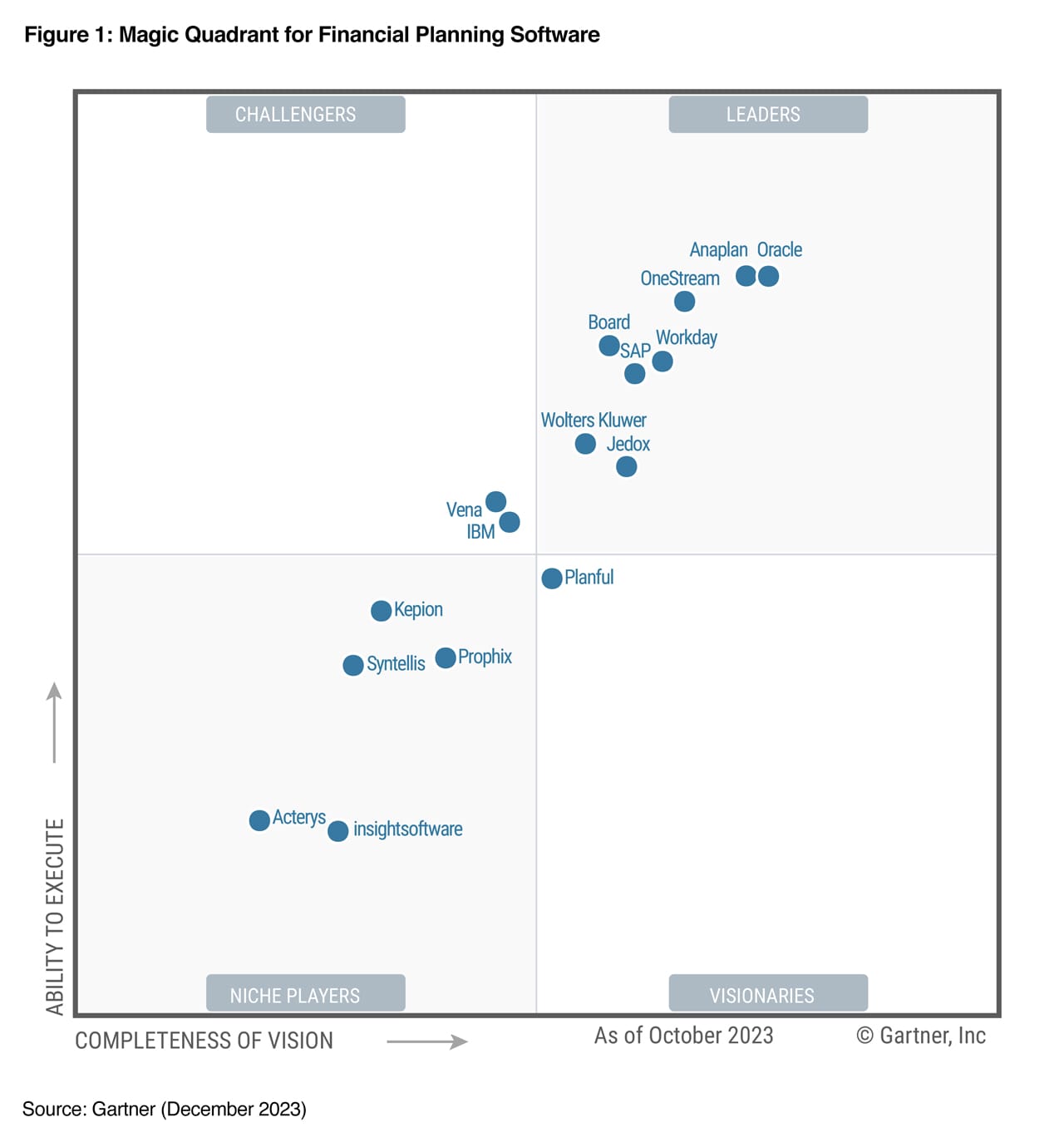Adapting to an inflationary environment

How Finance can use externalities to drive scenario planning
The financial planning and analysis (FP&A) landscape has changed dramatically over the last few years due to many challenges, including a global pandemic, geopolitical conflict, energy crises, climate change, cyberattacks, and remote work. In addition, a rapid rise in prices and interest rates started in 2022 and continues to garner international concern and action. In many countries, inflation has reached 40-year highs, and energy and food prices have seen the biggest price increases.
The impact of inflation has been felt worldwide as people struggle to afford the rapidly increasing costs of basic needs such as housing, food, and energy. Inflation also affects organizations as rising costs of labor and raw materials strain profit margins. Inflation has historically been relatively stable throughout the developed world and has been a simple assumption based on historical trends; however, today’s turbulent times require organizations to not only manage inflation, but plan for it as well.
The inflationary environment in 2022 and beyond
There are many causes of inflation, but the commonality is almost always a decrease in supply or an increase in demand that results in higher prices that eventually bring supply and demand back into equilibrium. Over the last few years, a few major reasons for the increase in prices has been supply chain disruption, reduction in oil production, and other energy-related factors. To better understand and adapt to inflation, finance professionals should remember three key points:
- Inflation is a global problem, and rates vary by country
Inflation rates have differed substantially by country, discrepancies that highlight the complexity of inflation, and the importance of developing a strategy for planning and managing in an inflationary environment. - There are many different indexes that help measure inflation, and each provides unique insights
When finance professionals determine which index and forecast to rely on for planning, it is important to understand what each index includes in its calculations, and which indexes are most relevant and appropriate to use for a particular organization. - Inflation affects industries differently
It is critical for finance professionals to understand how inflation affects respective industries, the current inputs, and the assumptions that can be used to model it over the coming months and years.
Adapting to an inflationary environment: a threefold approach
There are three key ways in which FP&A professionals can adapt to an inflationary environment: business partnering, predictive planning technology, and sensitivity analysis and scenario planning.
1. Business partnering
There is a direct correlation between economic uncertainty and business partnering: more uncertainty demands closer partnering between FP&A professionals and the broader business. FP&A professionals must embrace their role as strategic advisors to their organizations, a role that requires consistent and meaningful interaction with people across all departments.
FP&A professionals must not merely receive but instead co-create strategies for both managing and planning for the characteristic volatility of our current environment. As business partners, they can review the following factors for opportunities to increase revenue and/or reduce expenses:
- Product portfolio: review the entire portfolio and look for opportunities to drop unprofitable products, bundle products as a way to increase revenues, and increase prices
- Expenses: consider a zero-based budgeting process and require the business to review and justify all expenses
- Working capital: work closely with treasury to develop cash management strategies that maximize working capital
2. Predictive planning technology
With the ever-increasing need to include external drivers, sensitivity analysis, and a review of multiple different scenarios, the need for digital transformation in financial planning is more important than ever. According to the FP&A Trends Survey 2022, respondents who utilized technology were happier with the forecast than those who did not. Only 39% of respondents rated forecast satisfaction as either good or great; however, the number jumped to 50% for organizations using a cloud-based planning tool and 63% for those using artificial intelligence (AI) as part of the planning process.1
According to a recent BARC topical survey2, the use of predictive planning is skyrocketing: one in four organizations already use predictive algorithms and machine learning productively as they seek ways to produce their plans and forecasts in less time, with less effort, and with better and more accurate results. Key findings from the survey include the following:
- 94% of users already benefit, or expect to benefit, from predictive planning technology
- Productive use of predictive planning technology in corporate planning has increased nearly 7x in two years, from 4% in 2020 to 27% in 2022
- 64% of users increase quality and accuracy of forecasts with predictive planning technology
- 1% of organizations have failed at using predictive planning technology
Companies need to embrace predictive planning and AI technology as an enabler of a more robust and complete planning process. The technology alone will not magically make an existing plan more accurate; however, it can and does enable organizations to gain greater insights into drivers of KPIs and to use these drivers, plus drivers they can import from third parties such as commodities pricing fluctuations, to build data-backed plans that inform confident decisions. A robust cloud-based planning tool can make it easier to collaborate across the business, implement external drivers, use AI and machine learning to illuminate trends, alerts, and opportunities, and compare various business scenarios. Despite the opportunities that predictive planning and AI technology offer to finance professionals, misconceptions abound regarding its impact.
3. Sensitivity analysis and scenario planning
Sensitivity analysis is the process of taking a key input and seeing how a key driver changes because of that input. An example of a sensitivity analysis is taking the cost of lumber and seeing the impact on a building contractor’s overall profitability at different lumber cost points. Running a sensitivity analysis on key drivers and inputs can help FP&A professionals determine how each driver and input will affect the overall financial health of the organization. One way to start is by taking the top three to five expense drivers and running a sensitivity analysis on each of the inputs to see how rising costs will affect overall financial health. Doing this will help determine when an organization may need to raise more cash or increase prices to ensure its overall well-being and financial health.
A static budget with only a point estimate is no longer sufficient in today’s rapidly changing environment, and the need to run multiple scenarios is more important than ever. Every organization should build plans for how they will operate and manage based on different scenarios that could occur in the coming months and years. Every organization should ask themselves: what will we do if inflation stays stubbornly high for the next two to three years? What will we do if the global economy heads into a major recession? These questions are the first step in modeling and planning for potential scenarios.
The FP&A department is perfectly positioned to help ensure the business not only runs multiple scenarios but also develops plans that can be enacted based on which scenario plays out over time. Download the full report to explore three external drivers and potential scenarios to consider in the planning process.
Summary
FP&A professionals can help the business manage an inflationary environment by incorporating business partnering, predictive planning technology, and sensitivity analysis and scenario planning in their planning processes moving forward.
The opportunity for FP&A professionals to make a real impact on their organizations increases during times of uncertainty, and helping them adapt to this changing environment allows the finance organization to continue evolving from a back-office function to that of a value-added strategic partner.
References
1 FP&A Trends, FP&A Trends Survey 2022: How Technology Advances FP&A to the Role of Strategic Advisor, July 2022
2 BARC, Predictive Planning and Forecasting on the Rise – Hype or Reality?, 2022

